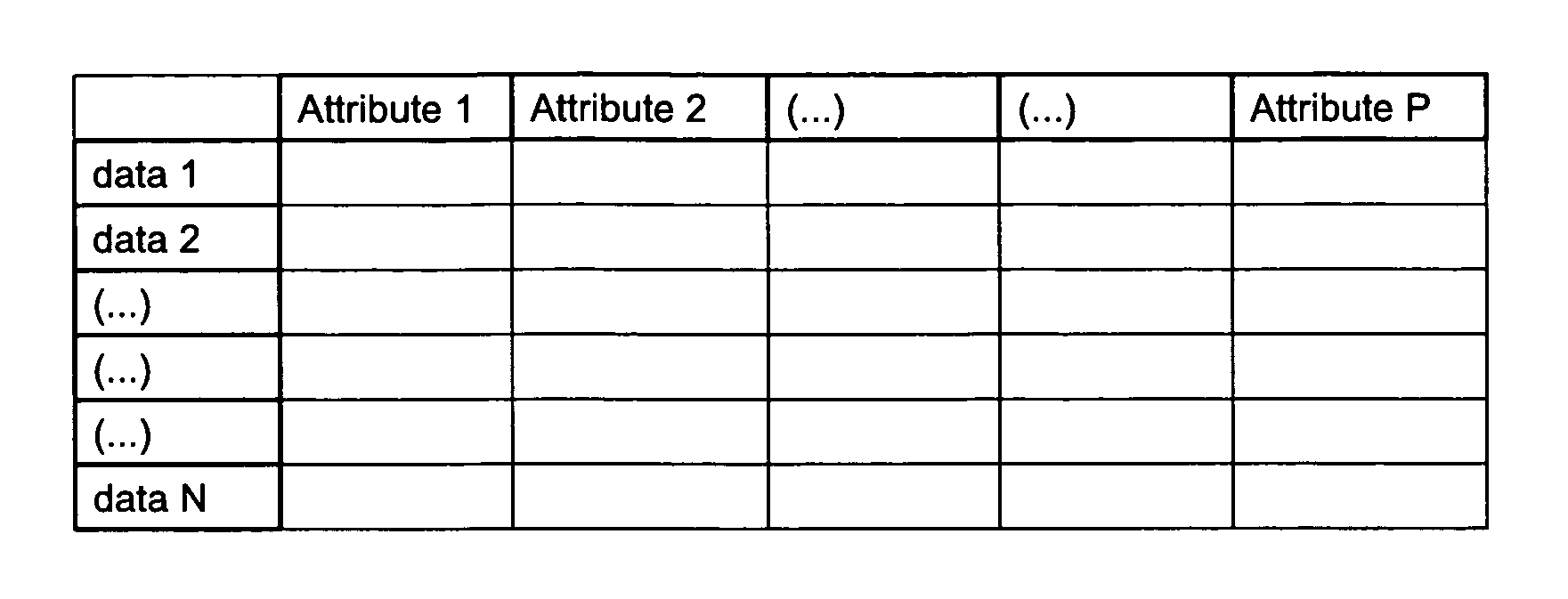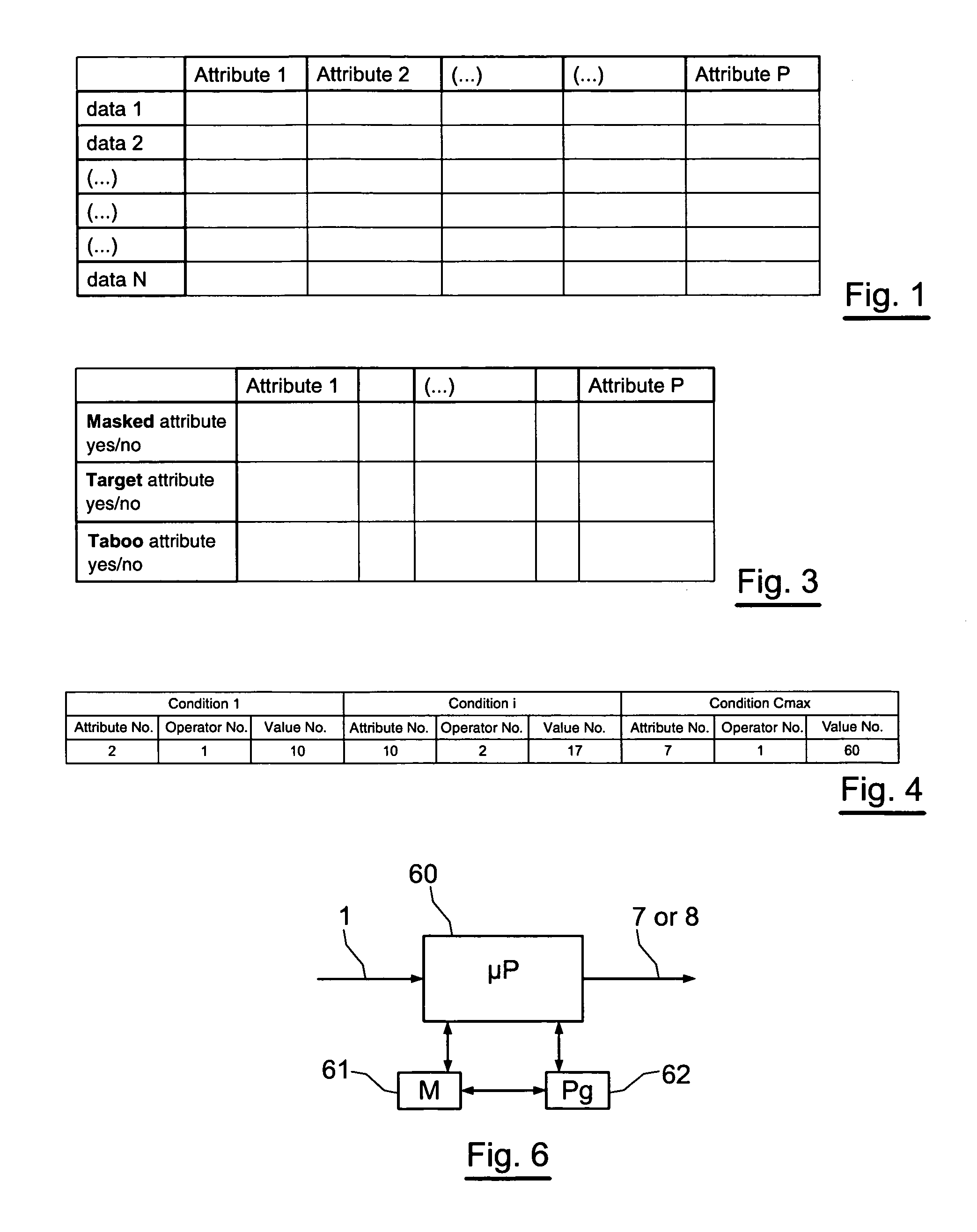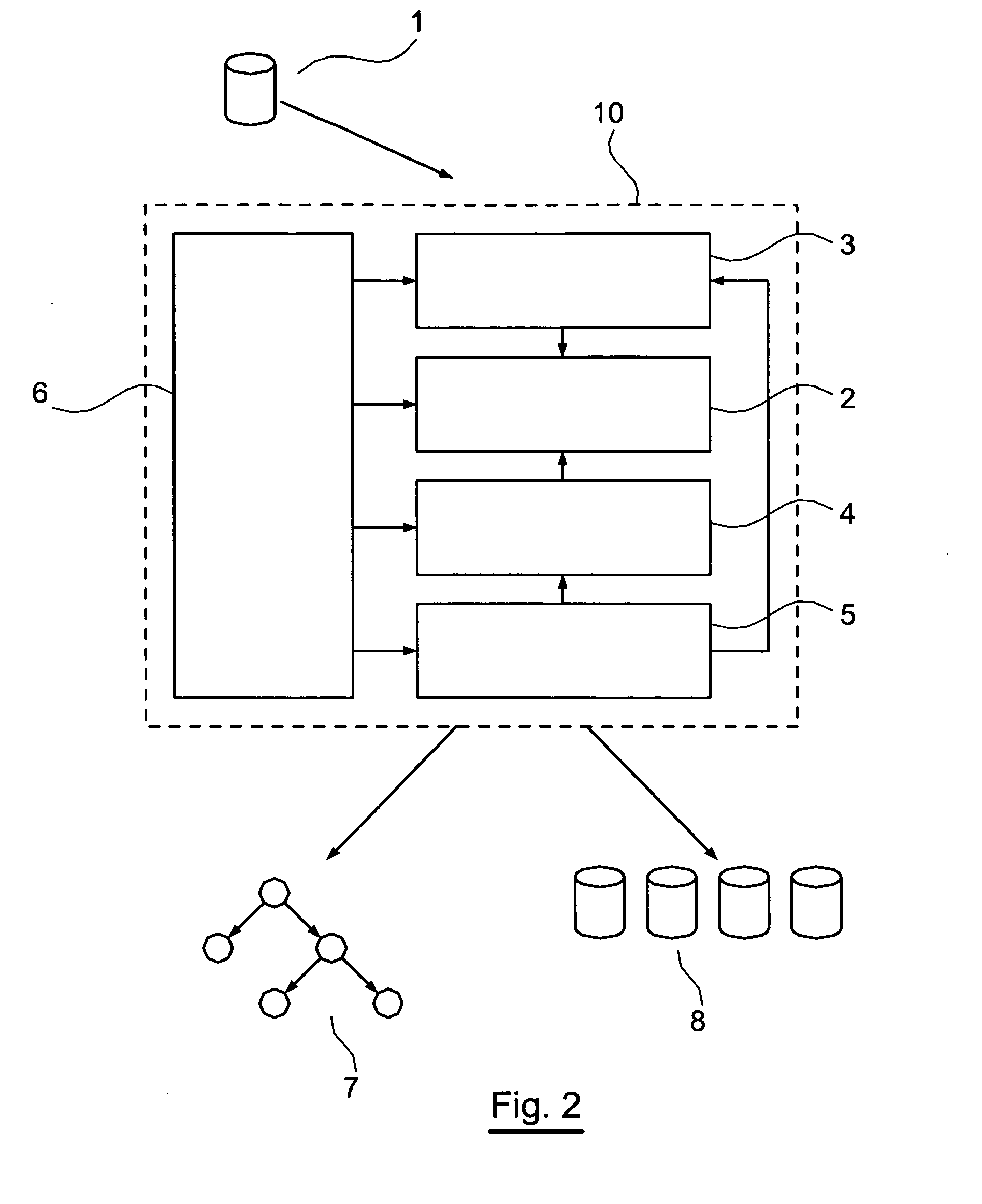Method and device for the generation of a classification tree to unify the supervised and unsupervised approaches, corresponding computer package and storage means
a classification tree and classification technology, applied in the field of datamining software programs and statistical methods, can solve the problems of not being able to generate a decision tree in taking into account several target variables, unable to manage a target variable using the first known technique (the cart technique) and not being able to perform unsupervised classification without. , to achieve the effect of less cos
- Summary
- Abstract
- Description
- Claims
- Application Information
AI Technical Summary
Benefits of technology
Problems solved by technology
Method used
Image
Examples
case 1
[0089] The following is the mode of management of the UMM table of properties of attributes for the various targets and / or explanatory (non-masked) attributes: [0090] Case 1 : the user asks for a classic supervised analysis, with a single target variable Vi. In this case, to obtain a supervised classification model with only one target variable, the target variable Vi is marked as such and is also marked taboo. The other variables (not marked target variables) are not marked taboo (they are therefore explanatory).
case 2
[0091] In the documentary field, the target variable may, for example, be the subject class [0092] Case 2: the user asks for supervised analysis with several target variables Vi, Vj, Vk. . . in this case, to obtain a supervised classification model with several target variables, the target variables Vi, Vj, Vk. . . are marked search and are also marked taboo. The other variables (not marked target) are not marked taboo (they are therefore explanatory).
case 3
[0093] In the documentary field, the variable target variables may, for example, be the type of document (novel, article, thesis etc), the subject of the document (politics, information technology, science etc). [0094] Case 3: the user asks for unsupervised analysis (clustering). In this case, to obtain an unsupervised classification model, the variables are all marked target and no variable is marked taboo. [0095] Case 4: the user asks for unsupervised analysis (clustering) but furthermore wants that certain variables Vi, Vj. . . (but not the totality of the variables) should not act as explanatory variables of the model generated. In this case, the variables are all marked target and only the variables specified as such are marked taboo.
[0096] In the documentary field, there is therefore no specified class of document (no particular target variable), and the document will be classified on the basis of the values of their descriptive attributes, for example the key-word count.
[00...
PUM
 Login to View More
Login to View More Abstract
Description
Claims
Application Information
 Login to View More
Login to View More - R&D
- Intellectual Property
- Life Sciences
- Materials
- Tech Scout
- Unparalleled Data Quality
- Higher Quality Content
- 60% Fewer Hallucinations
Browse by: Latest US Patents, China's latest patents, Technical Efficacy Thesaurus, Application Domain, Technology Topic, Popular Technical Reports.
© 2025 PatSnap. All rights reserved.Legal|Privacy policy|Modern Slavery Act Transparency Statement|Sitemap|About US| Contact US: help@patsnap.com



